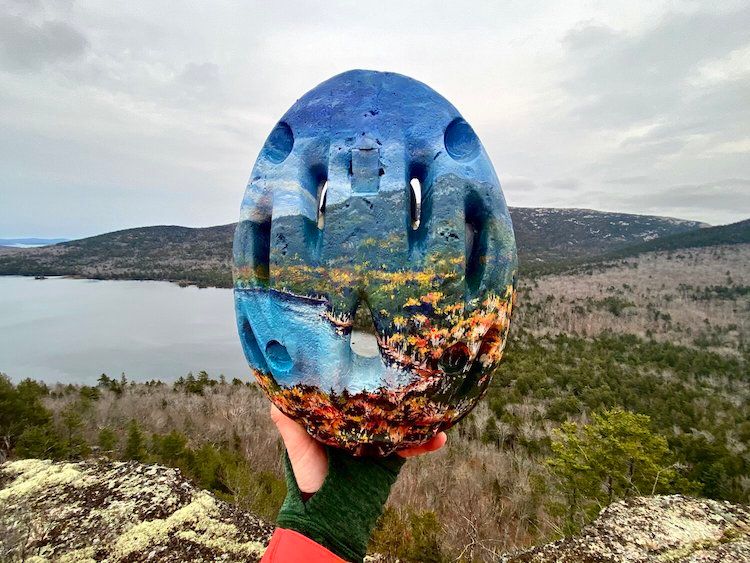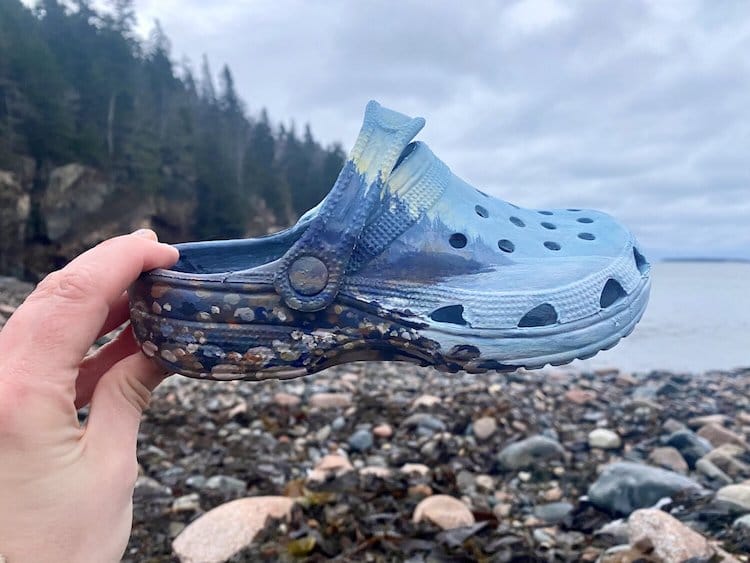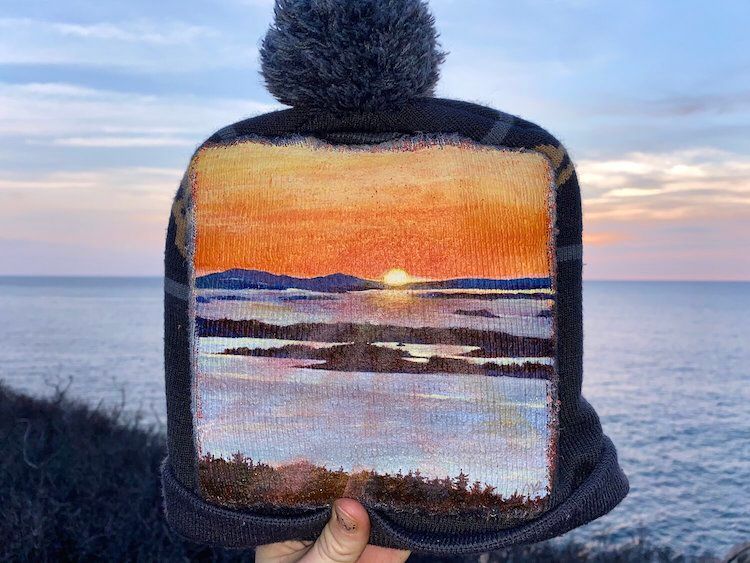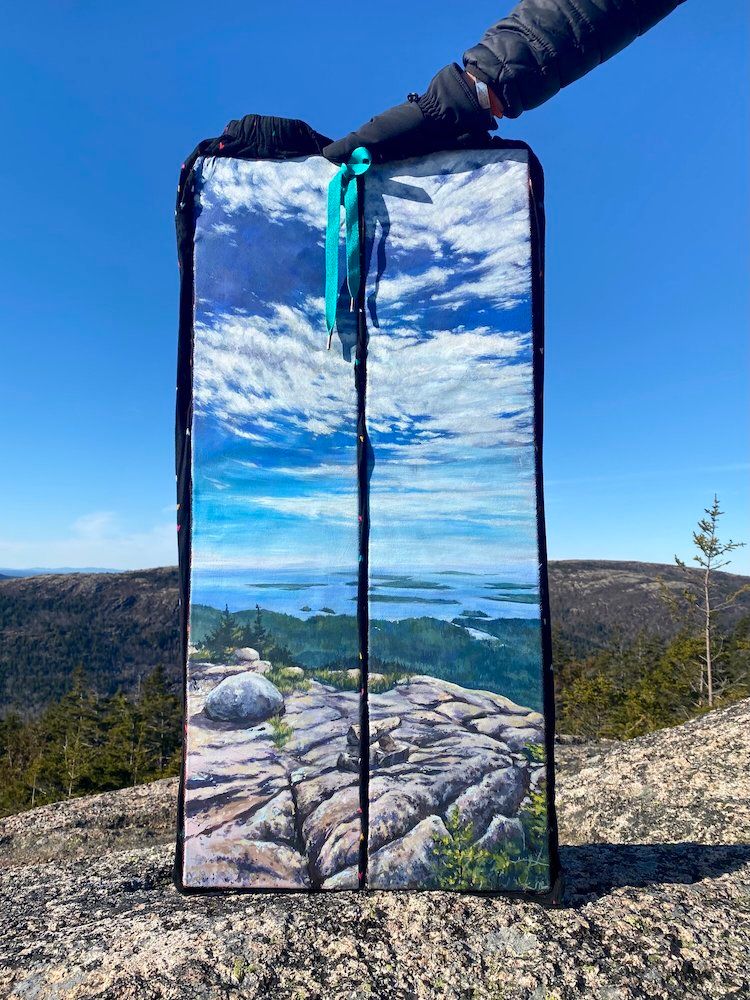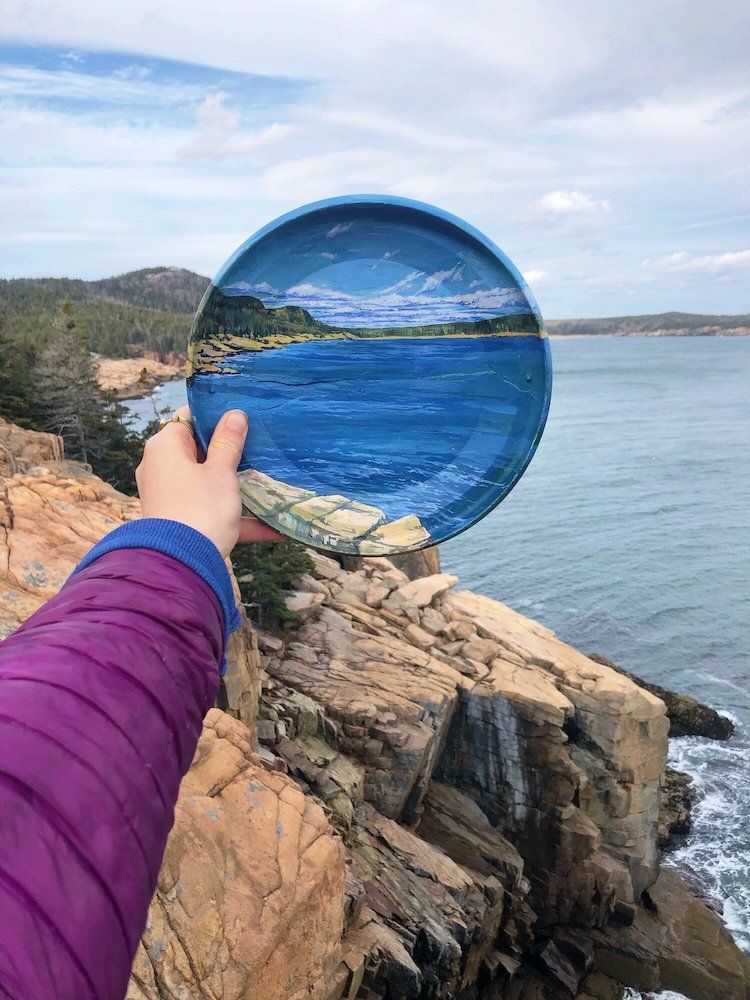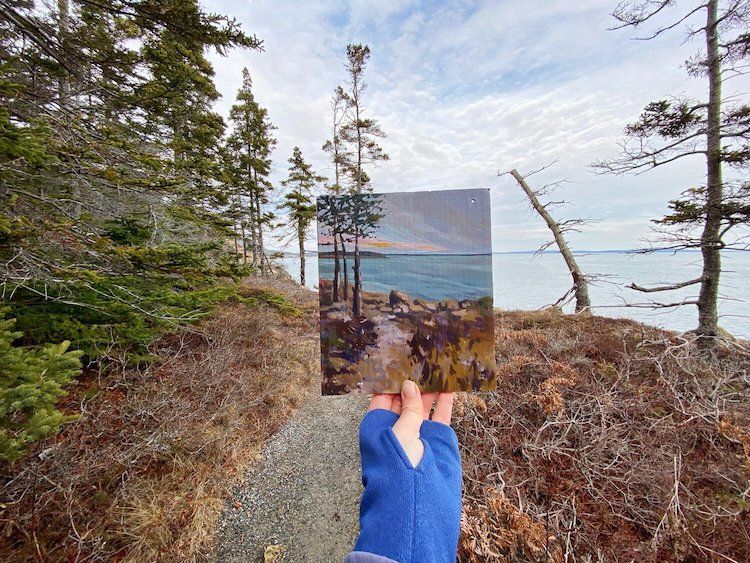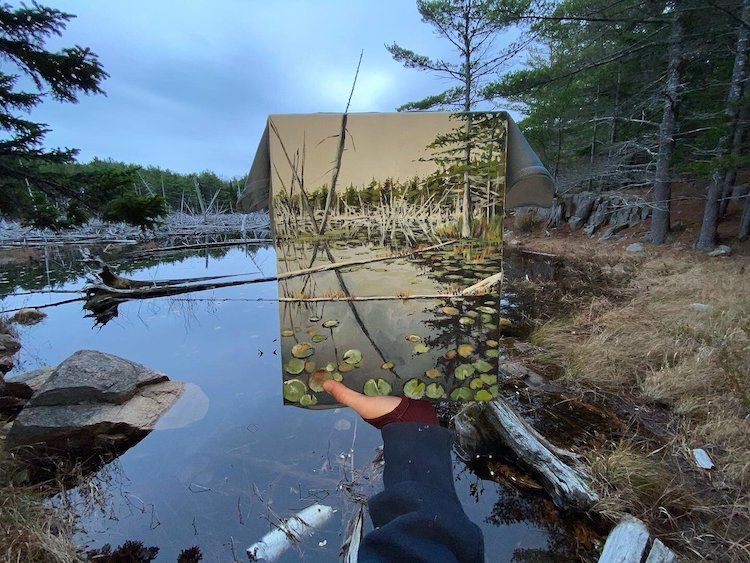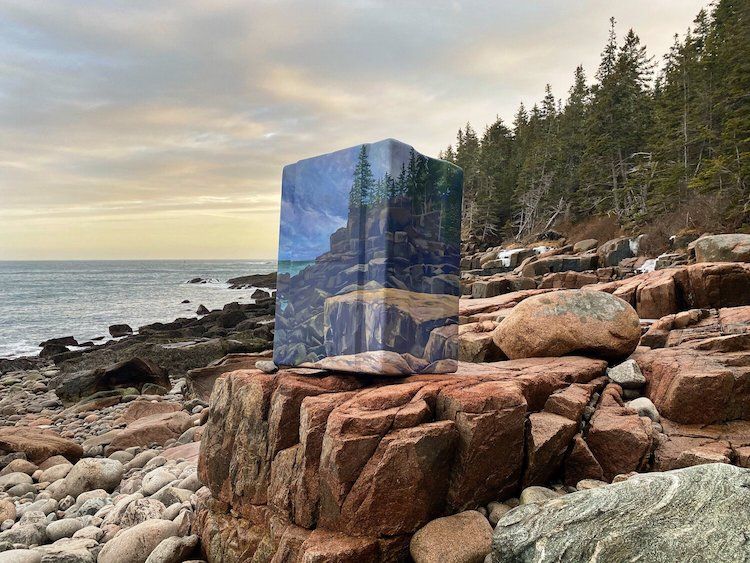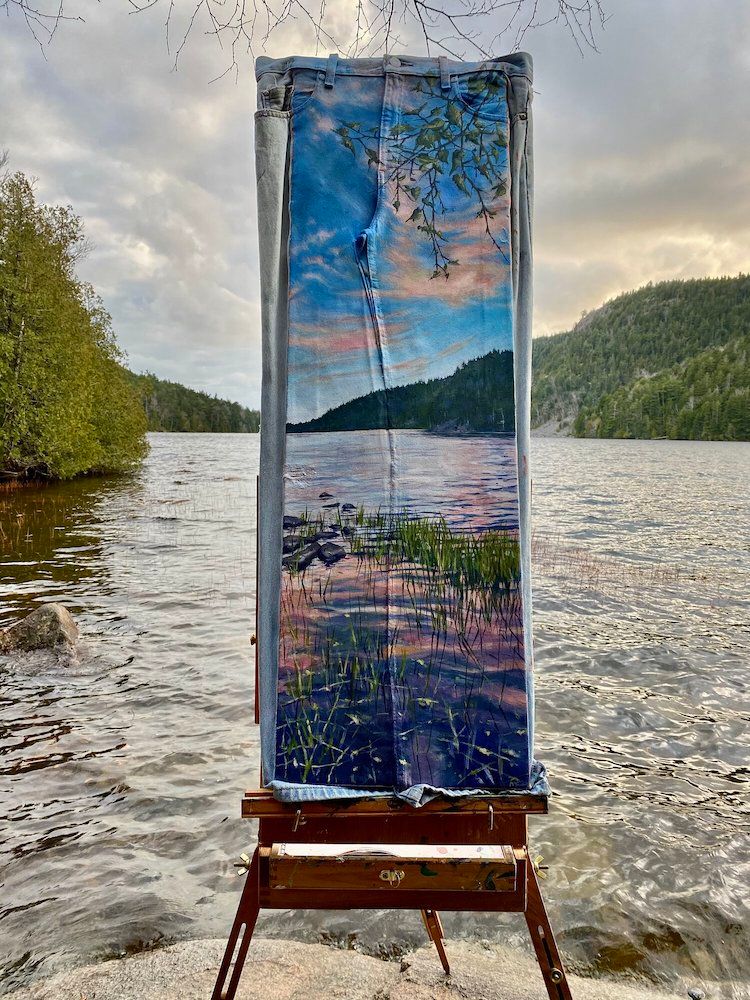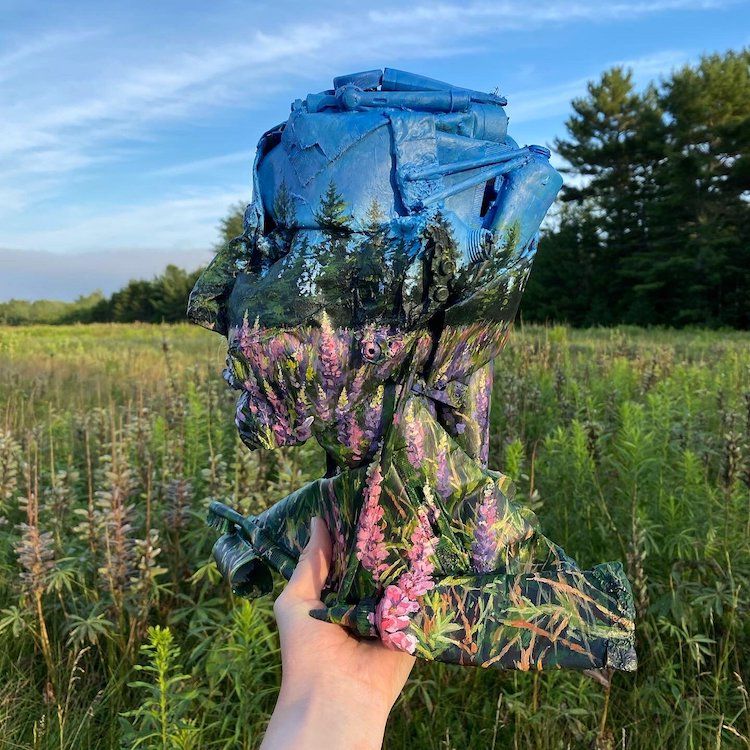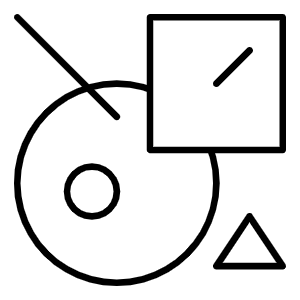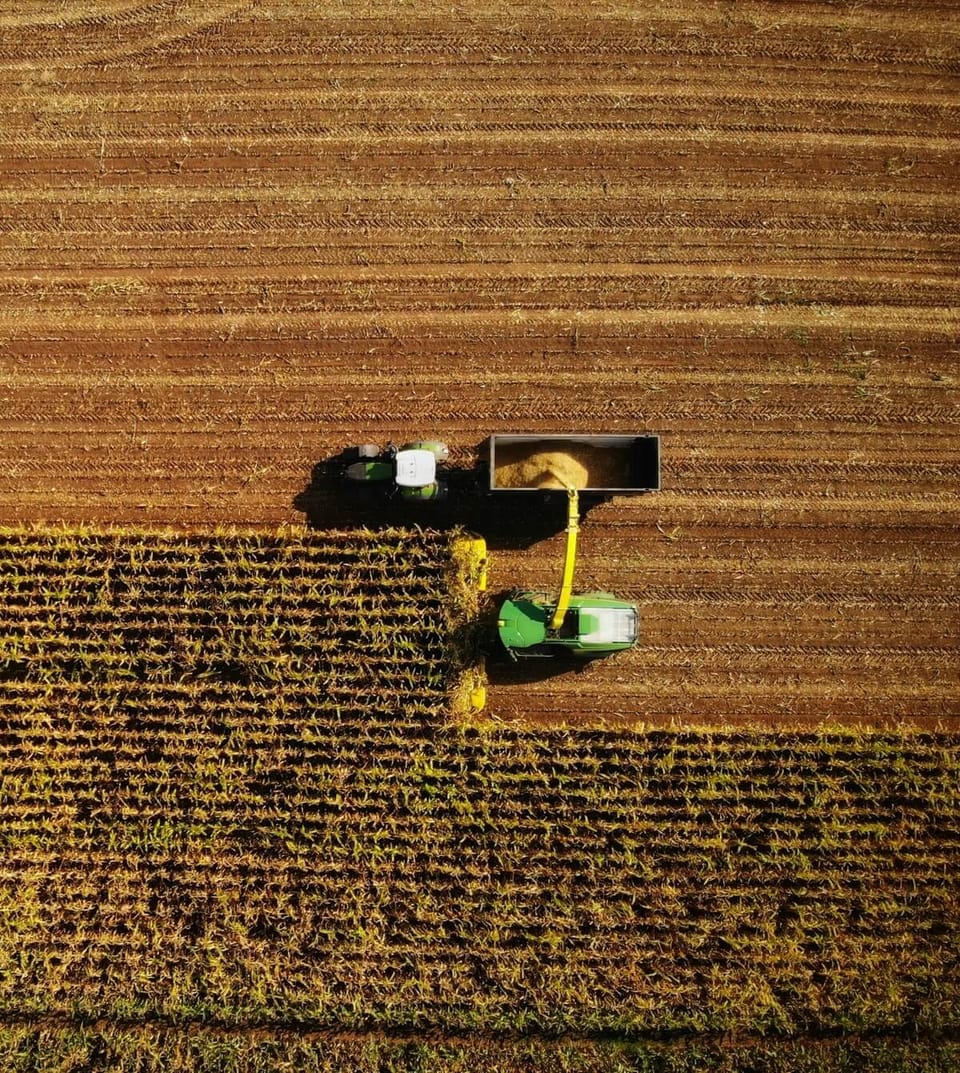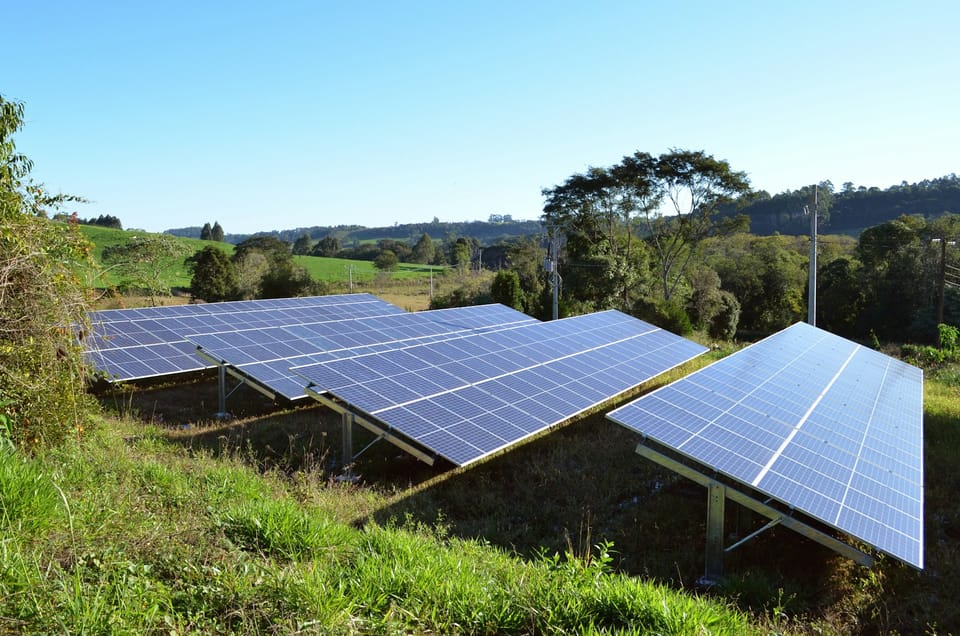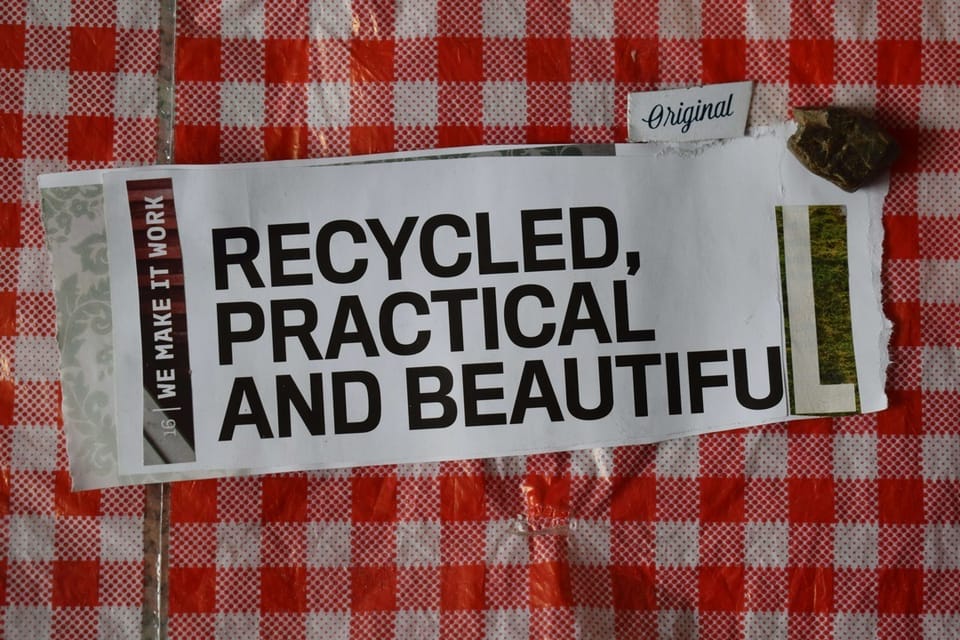Artist Paints Discarded Items To Blend in With the Landscape Where They Were Found
By painting abandoned objects to match the earth, this artist erases human trace while making a powerful statement. Each piece vanishes into the scenery—inviting reflection on waste, place, and perception.
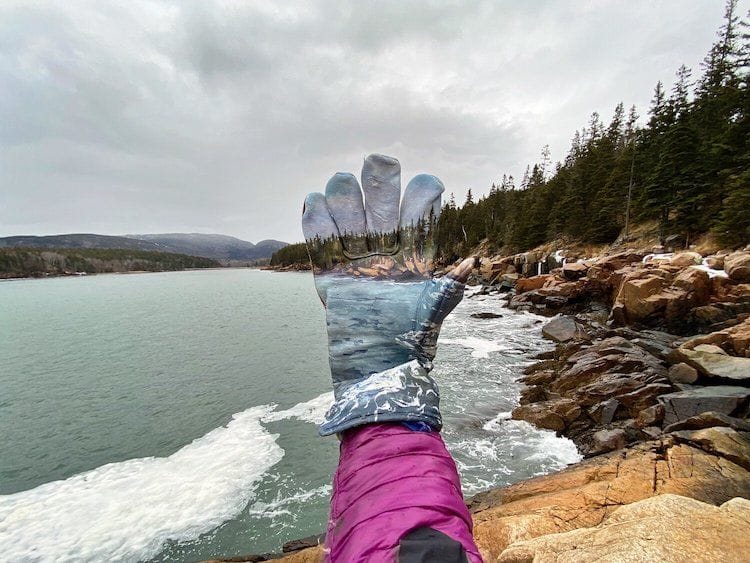
Have you ever come across discarded objects on your otherwise scenic hike? Well, outdoor educator and part-time artist Mariah Reading has found a new purpose for those unwanted items. She uses her masterful painting skills to transform trash into stunning works of art that seamlessly blend into the landscape where it was found.
Reading noticed the connection between art and trash while taking a sculpture class her senior year at Bowdoin College. Inspired to cut down on her own materials, the artist began using found objects as canvases for her landscape paintings. She continued this after she graduated, collecting litter and discarded items from national parks across the United States.
“[My art] is all improvised,” she continues. “It's all based on what I found out there in the field. That's why this project continues to be fresh. I don't know what I'm going to come across which is what makes this project exciting.” Her series based in Acacia National Park, Maine (Wabanaki Confederacy Land), includes a repurposed Croc shoe, a styrofoam helmet, and a glove–all of which were abandoned in nature. “Debris items offer a portrait of the landscape,” Reading adds, as the objects provide some insight into how and why people are on that land.
You can purchase prints and originals of Reading's work via her website and keep up to date with her latest projects by following her on Instagram and Facebook.
